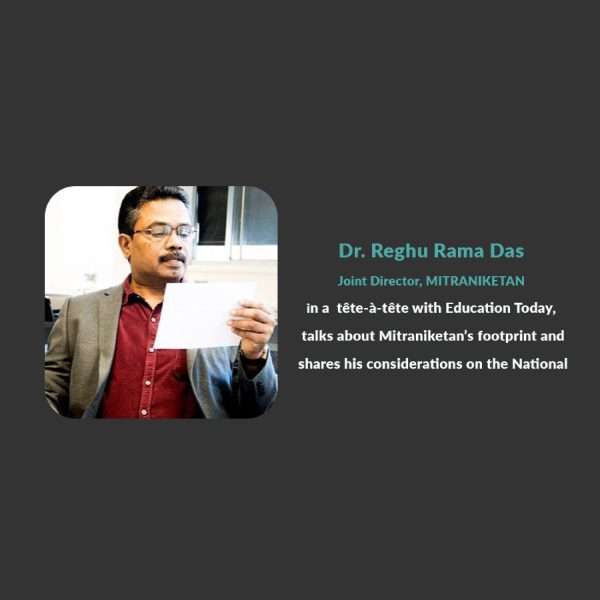Please brief us about the Mitraniketan and its various educational initiatives?
Mitraniketan is a charitable organization established in the year 1956, registered under the Travancore Cochin Literary Scientific and Charitable Societies Registration ACT XII of 1955 in 1967 at Vellanad in Trivandrum district. The organization is engaged in Science & Technology and education-based development activities of the state focused on rural development. There are special programs focusing on the development of tribal children, rural youth, farmers and women in Kerala since its inception.
Padmasree K. Viswanathan founded Mitraniketan after his studies in Santiniketan and work experiences in Sevagram. The educational and community development ideas of Tagore and Gandhi have influenced Viswanathan to initiate Mitraniketan in 1956. Over the last 55 years, Mitraniketan has developed in the form of a rural institute with facilities for education, training and other development activities.
Mitraniketan functions based on the Gandhian principles focusing on community-based education and development leading to individual empowerment, self-sufficiency at the household level agriculture production, utilization of local resources for income generation, and development & transfer of appropriate technology. Mitraniketan promoted traditional crafts in the field of pottery, silk weaving, coir, bamboo & reed craft, and khadi. The organization contributed to the total literacy achievement of the state through its literacy programs in the Vellanad Block and many tribal villages in the Trivandrum district.
Mitraniketan pioneered in promoting village cooperatives (farmers cooperatives, khadi cooperatives and bamboo cooperatives), and appropriate technologies like bio-gas, low-cost sanitation, farming technologies, water harvesting. Similarly, the organization has contributed its might in creating rural employment in farm and non-farm sector on a large scale.
An average of 5000 people including children, youth, women and farmers benefit from various activities of Mitraniketan every year. In addition, a large number of visitors from India and abroad utilize the facilities of Mitraniketan for exposure visits, voluntary work experiences, studies and research.
How, you think, the government could help in promoting quality education among deprived and discriminated sections of the population?
There are a few aspects involved in promoting quality education. Kerala Government has set some good examples in this regard. Now Government Schools in Kerala performing better and flow from Private to Government schools is the trend. This is mainly due to:
- Better infrastructure facilities for the schools including Smart classrooms to better water & Sanitation facilities.
- Placing experienced and qualified teachers along with frequent updating in the curriculum.
- Annual teacher training including motivation to educate disadvantaged children considering their socio cultural environment.
- Made the Panchayaths responsible for local schools OR Linking the Monitoring of Schools with Panchayaths concerned at every village. This includes maintenance of infrastructure, safe environment to the students from deviation, etc
- A strong and powerful Parent Teacher Association to monitor the education/teaching going on in the school along with support services especially to the disadvantaged children.
As an NGO working in the education space, what are your thoughts on the current education arena and NEP 2020?
Vocationalisation of education is important to meet the manpower needs of the country rather than continuing the British introduced system to continue.
NEP 2020 focus on this aspect too. NSQF has to be linked with the existing courses going on at different institutes/schools.
With online learning becoming the new normal, what transformations are you planning to bring into your working strategy?
Practical learning is possible only through direct interaction. Partly online sessions can be used which can fill the gaps if any. However, the objective of education is character building too which is possible through direct instructions, practices and interactions only.
Could you throw some light on your association with international organizations and how these collaborations helped to spruce up the educational charity work in the country?
We are a member of the Association for World Education located in Denmark. They focus on UN SDGs We work with the principle of global thinking and local action. We work based on SDGs at the local level in the area of Sanitation, water, energy, environment conservation etc which is part of education sessions too.
What challenges you are facing and how you are planning to overcome them?
Funding is an issue to support the education of tribal children which affects the placement of qualified manpower.

